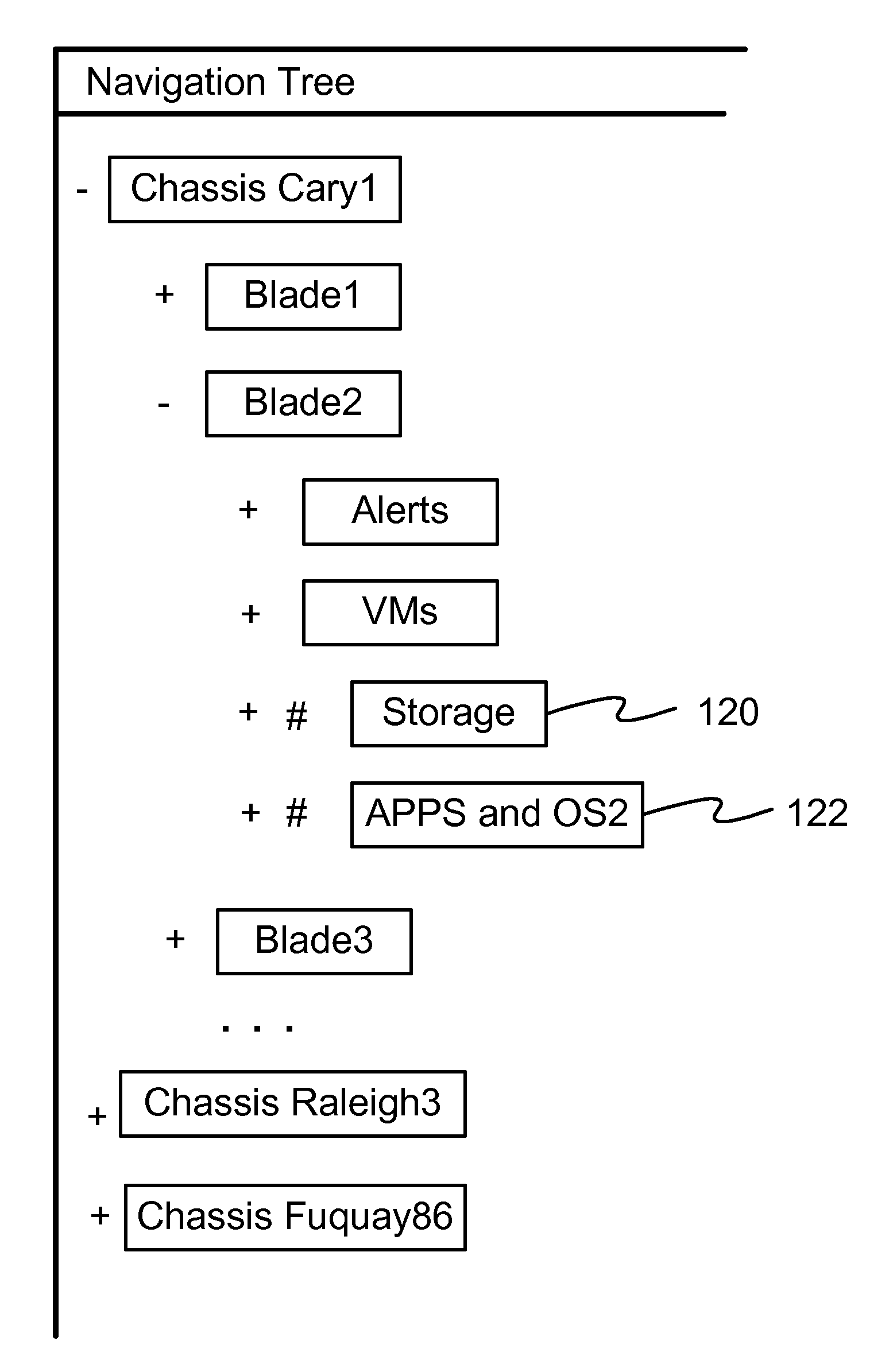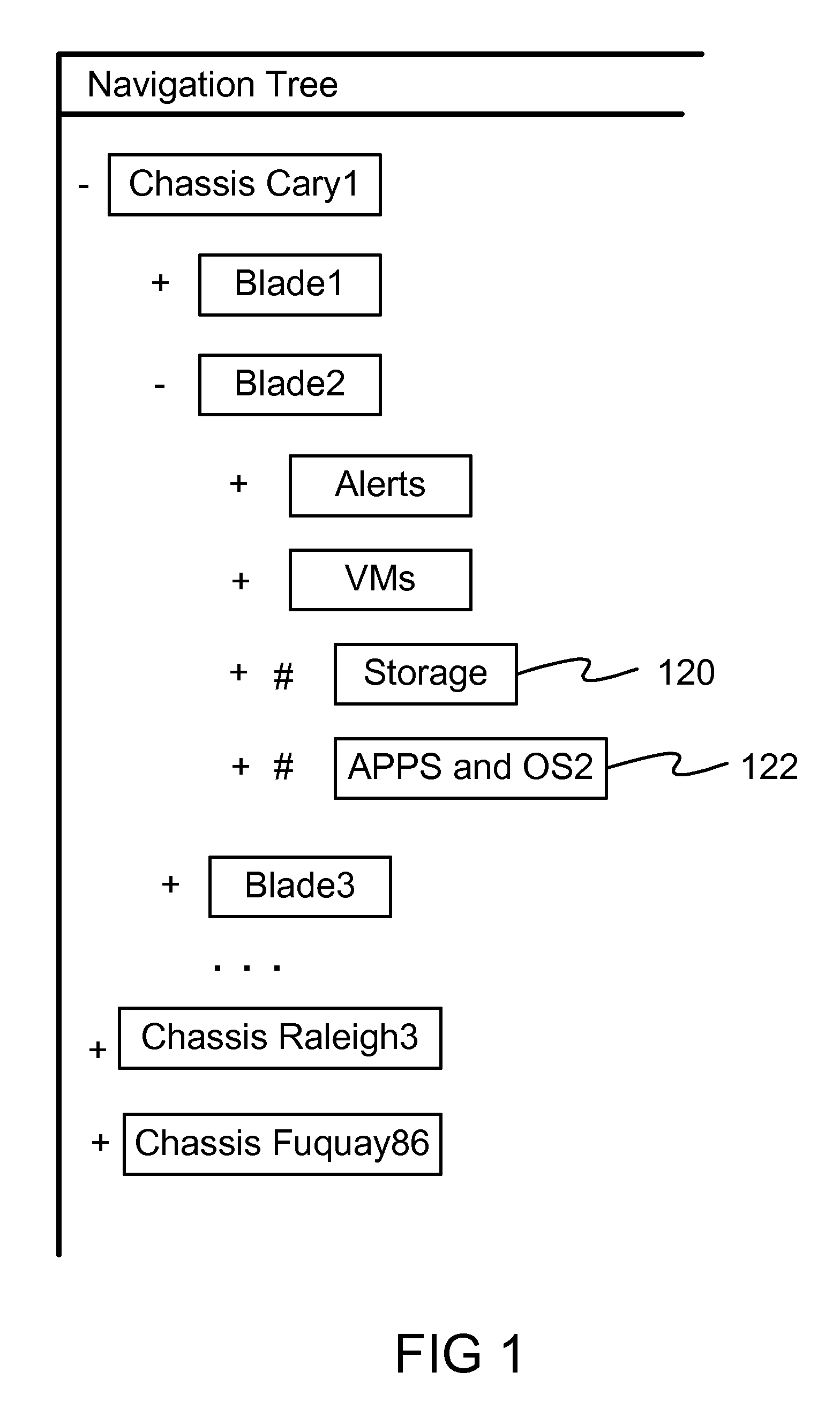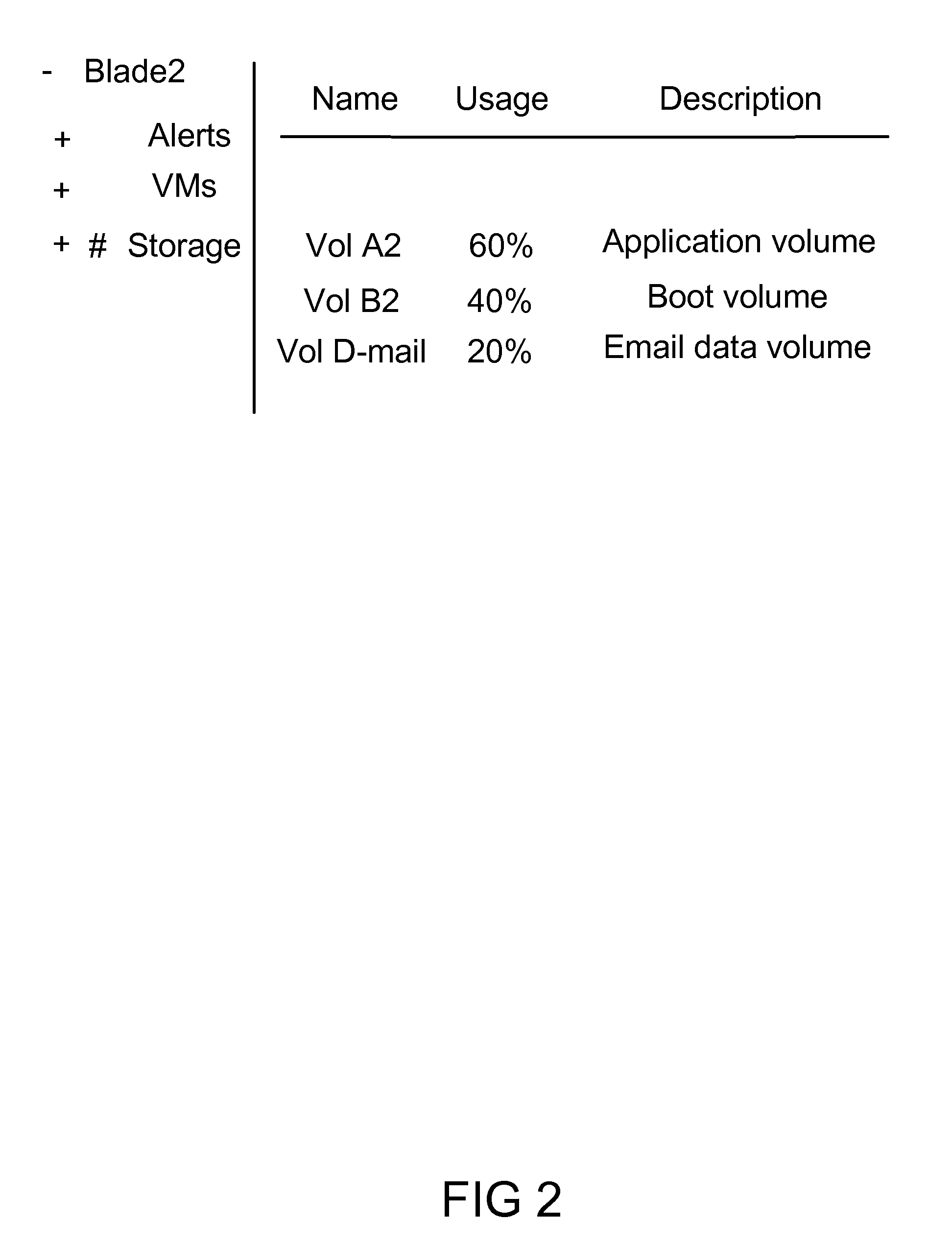Reorienting navigation trees based on semantic grouping of repeating tree nodes
a navigation tree and semantic grouping technology, applied in the field of reorienting navigation trees based on semantic grouping of repeating tree nodes, can solve the problems of difficult scaling to 100s or 1000s of items, occupying a lot of screen space, and more disorderly, so as to achieve the effect of occupying a lot of screen space, and reducing the number of items
- Summary
- Abstract
- Description
- Claims
- Application Information
AI Technical Summary
Benefits of technology
Problems solved by technology
Method used
Image
Examples
Embodiment Construction
[0016]Some embodiments of invention are used below for demonstration. First example: In an embodiment, (FIG. 1), there are 2 nodes that have mesh buttons, “Storage” (120) and “Appls and OSs” (122). These 2 navigation-tree nodes contain meshes—subnodes that also appear in other branches in the navigation tree. This type of mesh indication helps solve the problem for the user to know when nodes are part of an interrelated meshed area, and that additional views might be desirable. For example, if the user can preemptively see that a node contains a mesh before selecting it, the user could knowingly toggle the non-hierarchy of items on and off in the table, or even directly launch a traditional topology view in the content area. Most users generally prefer starting with simpler tabular UIs, yet sometimes the added connection information in a topology might be worth looking at.
[0017]Next, if the user clicks on the “Storage” text in FIG. 1, it might launch a standard non-meshed tabular di...
PUM
 Login to View More
Login to View More Abstract
Description
Claims
Application Information
 Login to View More
Login to View More - R&D
- Intellectual Property
- Life Sciences
- Materials
- Tech Scout
- Unparalleled Data Quality
- Higher Quality Content
- 60% Fewer Hallucinations
Browse by: Latest US Patents, China's latest patents, Technical Efficacy Thesaurus, Application Domain, Technology Topic, Popular Technical Reports.
© 2025 PatSnap. All rights reserved.Legal|Privacy policy|Modern Slavery Act Transparency Statement|Sitemap|About US| Contact US: help@patsnap.com



